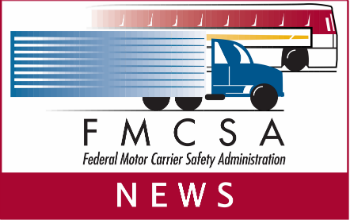 DON JERRELL
DON JERRELL
HNI Associate Vice President
Contrary to what some trucking trade publications are saying, it appears that rulemaking requirement and increase in minimum levels of financial responsibility (aka insurance) will not be happening within the next year.
There are a few reasons for this. First, the rule-making process itself takes time. Second, the Federal Motor Carriers Safety Administration has its own opinions about prioritization (and how fast to make changes). We'll cover each reason in greater depth. Keep reading!
The Rule-Making Process at a Glance
FMCSA announced plans to release an advanced notice of proposed rulemaking (ANPRM) this fall. Lots of transportation insiders have interpreted this as a final rule. But that's just not the case.
Generally, FMCSA’s process follows these steps:
1.) Notice of proposed rulemaking (NPRM)
2.) Comment period (usually 30-60 days)
3.) Final rule (assembled after FMCSA has reviewed all applicable comments)
4.) Review by Office of Management and Budget, which is part of the Executive Branch (rule is examined for financial impact, paperwork reduction acts, etc.)
5.) Final rule returned to FMCSA for publication (usually 24-48 hours)
6.) Published in the Federal Register, the daily newspaper of the United States, as law
In the case of increasing minimum levels of insurance, FMCSA announced it's actually going to do an ANPRM, which is an additional step at the beginning. An ANPRM is similar to a notice of proposed rulemaking as it also has a comment period.
Are Minimum Levels a Priority for FMCSA?
Another reason for inaction on minimum levels is FMCSA's “emphasis” on the issue. At a recent American Trucking Associations event, acting FMCSA Administrator Scott Darling shared what he believes are the top five priorities for FMCSA:
1.) Motor carrier fitness determination (using CSA)
2.) CSA “Phase 2," which involves streamlining field administrators processes, including off-site reviews
3.) Inspection modernization technology
4.) Unified Carrier Registration program
5.) Electronic Log Devices (ELDs)
As you can see, minimum levels of financial responsibility were not listed.
The implication I get is that minimum insurance levels will not change for a while. But that's not stopping industry experts from making predictions. Trucking folks have been repeating these four forecasts:
- The ANPRM will happen soon (before the end of the year, and maybe in November), with a comment period of 30-60 days.
- The NPRM will be shared in fall 2015.
- At the earliest, the final rule on minimum levels will come down in late 2015 (but more likely 2016).
- Implementation will be required within a year, maybe two.
Now, these are best guesses from the most knowledgeable people in trucking. But remember that when it comes to government action (or rather, inaction), you shouldn't be surprised by much.
What do you make of this breaking news? How are you preparing your firm for the (proposed) changes? Please sound off in comments!
Related Posts:
4 Winning Employee Rewards Programs for Truck Drivers
Should Minimum Insurance Coverage Requirements for Motor Carriers Go Up?
Why Providing Employee Benefits Makes a Difference to Your Drivers
Auto Liability Limits: What's a Fair Minimum for Motor Carriers?
.png?width=69&height=53&name=Acrisure%20Logo%20(White%20Horizontal).png)

 DON
DON ![[ CLICK HERE FOR SLIDE DECKS ] FMCSA & Wisconsin State Patrol Update -Make sure your business is up to speed with all current transportation regulatory and compliance issues-](https://no-cache.hubspot.com/cta/default/38664/9e080141-dd00-4840-87e6-83823cb1202b.png)
